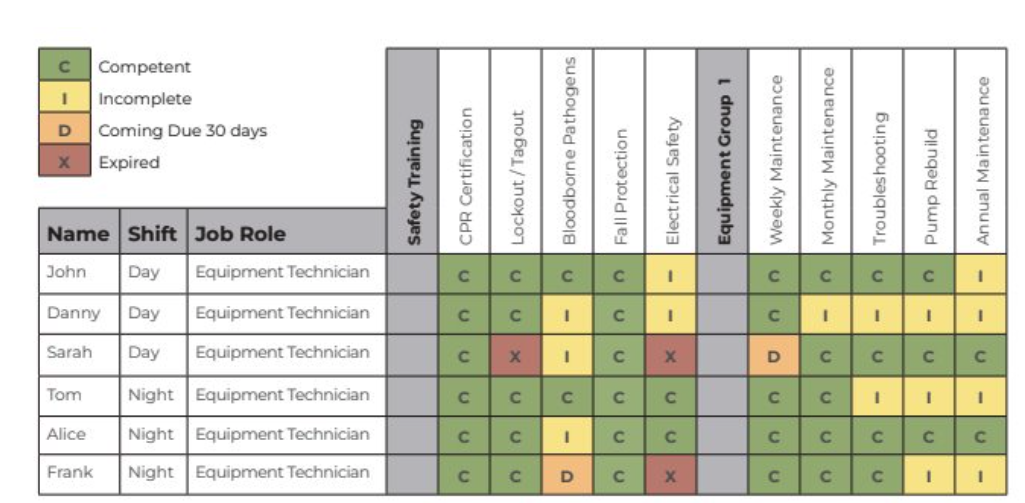In our first installment of this series on audit readiness, we discussed the business risk associated with paper tracking for your audit-prep process. In the second part of this series on audit readiness, we’re looking at the value of streamlined processes to digitize the documentation of offline OJT efforts.
The transition from traditional on-the-job training (OJT) documentation to digital record-keeping is not merely a trend but a substantial upgrade that enhances operational efficiency and compliance. This shift not only supports better audit trails ls but also brings numerous benefits that can profoundly impact the effectiveness of workforce management and training verification.
1. Enhanced Incident Tracking
One of the most significant benefits of digital documentation is the improved tracking of workplace incidents. Digital records allow organizations to validate that operators were trained properly before they undertook a specific task. In the event of an incident, it's crucial to be able to quickly confirm all necessary training procedures were followed and that the personnel involved were indeed qualified for the task. This not only helps in identifying the root causes of incidents but also in defending the company during legal or regulatory proceedings.
2. Real-Time Skills Verification
With digital documentation systems, once an employee completes a training module, their new skills are instantly recorded and updated in the system. This information is then immediately visible to key departments such as QA and Human Resources. The immediate availability of this data eliminates delays that can occur with manual entry and paper records, ensuring that all departments are synchronized in real-time regarding employee capabilities and qualifications. This can be particularly beneficial in environments where quick redeployment of staff based on their skills is critical.
3. Ensured Completion and Approval
Digital records provide a clear, auditable trail of completed training, including necessary approvals and signoffs by supervisors or managers. This feature is essential for verifying that the training was not only completed but also assessed and approved by a competent authority. Systematic processes reduce the possibility of human error and ensure compliance with internal and external training standards and regulations.
4. Documentation of Achieved Skills
Incorporating evidence such as photos or videos within digital training records is an additional layer of validation that visually demonstrates competency and stays attached to the employee record. For instance, a video of an employee competently operating a powered industrial truck (P.I.T.) can serve as definitive proof of skill acquisition, application and execution. This visual evidence can be particularly persuasive during audits, providing clear-cut evidence that training was thorough and effective.
- Seamless Integration into Skills Matrix
Finally, the integration of completed and validated OJTs into a skills matrix becomes seamless with digital documentation. This integration allows organizations to maintain an up-to-date and dynamic overview of the entire workforce’s capabilities, facilitating better planning, gap analysis, and compliance checks. The skills matrix becomes a powerful tool for managing workforce development, ensuring that all employees are adequately trained and qualified for their roles, and identifying needs for future training.
In an industry riddled with employee attendance challenges, an integrated skills matrix shows you who is on the production floor and what they are trained to do.
For example, Production line 1 is fully staffed today with 20 employees. Production line 2 is understaffed with only 12 people. There are more customer orders for line 2’s product today. How can you quickly and effectively see who from line 1 is also trained to fabricate the product on line 2? The answer: an integrated skills matrix.

Conclusion
The transition to the digital documentation of OJT processes offers profound benefits across various aspects of workforce management, regulatory compliance and labor allocation. By improving the accuracy, accessibility, and reliability of training records, organizations can ensure a more compliant, efficient, and safer workplace. As businesses continue to evolve with technological advancements, the implementation of digital record-keeping will be a crucial step toward achieving these goals.
Read the other articles in our audit readiness series and check out our audit readiness podcast!
.png?width=680&height=255&name=Audit%20Readiness%20Assessment%20CTA%20(1).png)